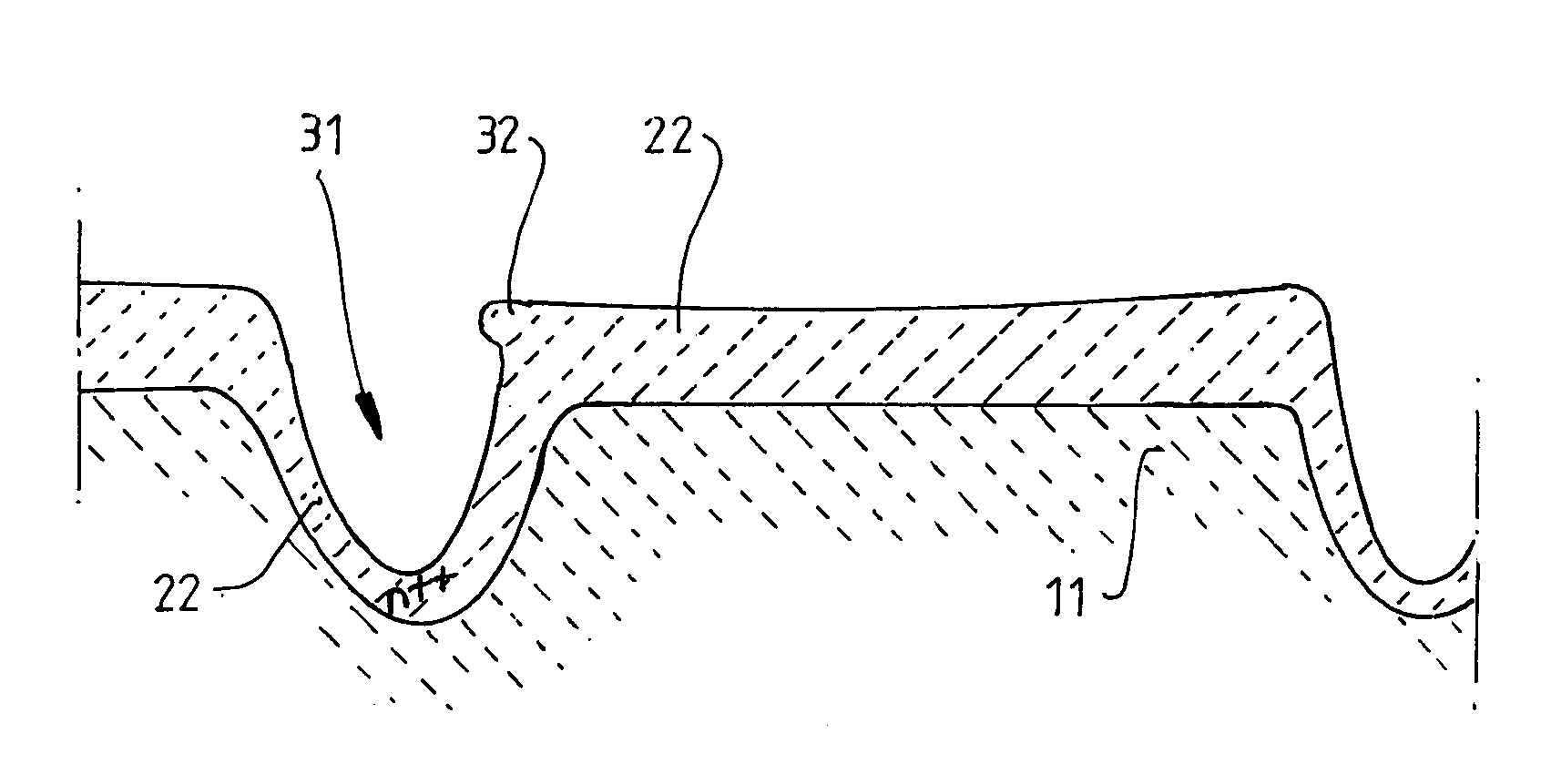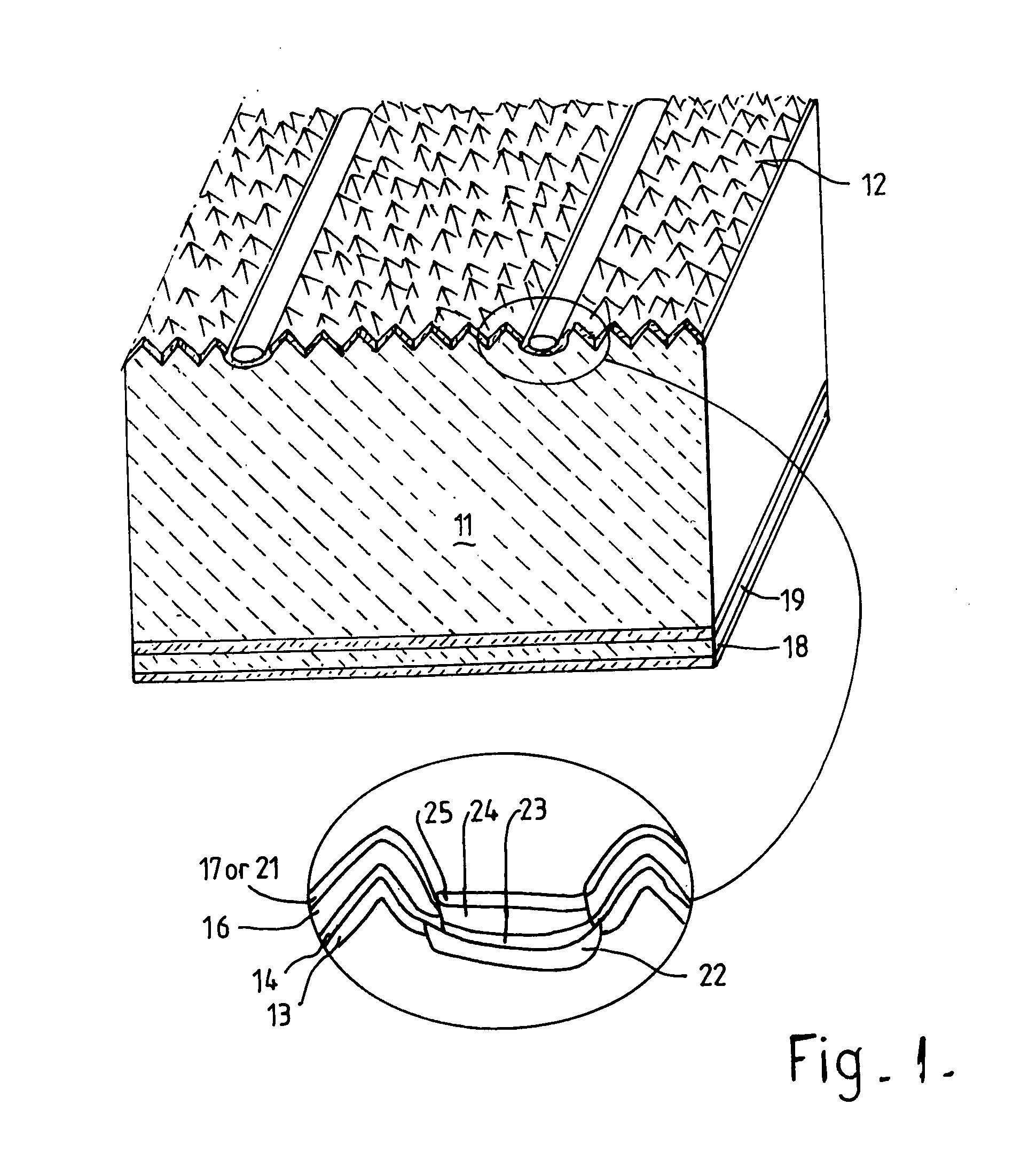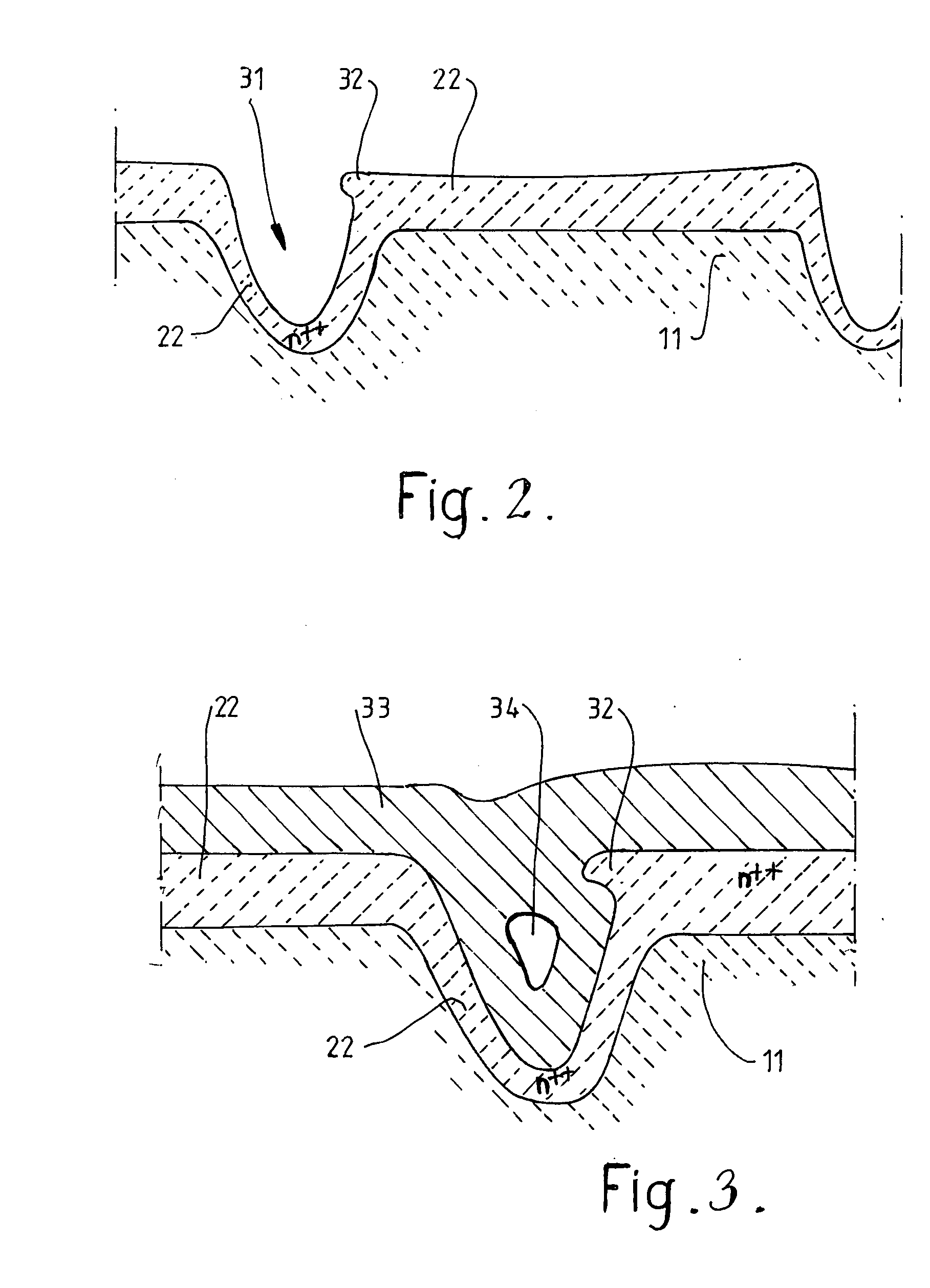Metal adhesion
a technology of metal adhesion and surface roughness, which is applied in the direction of semiconductor/solid-state device manufacturing, electrical apparatus, semiconductor devices, etc., can solve the problems of photovoltaic devices, poor adhesion to silicon materials, and exacerbated problems, so as to increase surface roughness and increase turbulence
- Summary
- Abstract
- Description
- Claims
- Application Information
AI Technical Summary
Benefits of technology
Problems solved by technology
Method used
Image
Examples
Embodiment Construction
[0030]By way of example, and with reference to FIG. 1, a suitable fabrication sequence for the formation of a silicon solar cell is as follows:
1. Isotropic texturing 12 of the front (or light receiving) surface of the p-type wafer 11;
2. front surface diffusion of n-type dopant 13;
3. edge junction isolation / psg removal;
4. ARC deposition on the front surface by PECVD;[0031]a. 100 angstroms of hydrogen rich silicon nitride specifically for surface passivation 14;[0032]c. 600 angstroms of silicon nitride 16 of refractive index 2.0-2.1;[0033]d. dopant containing layer 17;
5. screen-print rear (non-light receiving) surface with aluminium for rear contact 18;
6. fire rear surface to sinter rear contacts 18 and form back surface field 19 by formation of aluminium / silicon alloy and liquid phase epitaxy;
7. laser doping of silicon in localised regions to form heavily doped (n+) regions 22 for formation of self-aligned front surface metal contacts;
8. Plating a layer of Nickel 23 over the laser do...
PUM
| Property | Measurement | Unit |
|---|---|---|
| depths | aaaaa | aaaaa |
| depths | aaaaa | aaaaa |
| angle | aaaaa | aaaaa |
Abstract
Description
Claims
Application Information
 Login to View More
Login to View More - R&D
- Intellectual Property
- Life Sciences
- Materials
- Tech Scout
- Unparalleled Data Quality
- Higher Quality Content
- 60% Fewer Hallucinations
Browse by: Latest US Patents, China's latest patents, Technical Efficacy Thesaurus, Application Domain, Technology Topic, Popular Technical Reports.
© 2025 PatSnap. All rights reserved.Legal|Privacy policy|Modern Slavery Act Transparency Statement|Sitemap|About US| Contact US: help@patsnap.com



